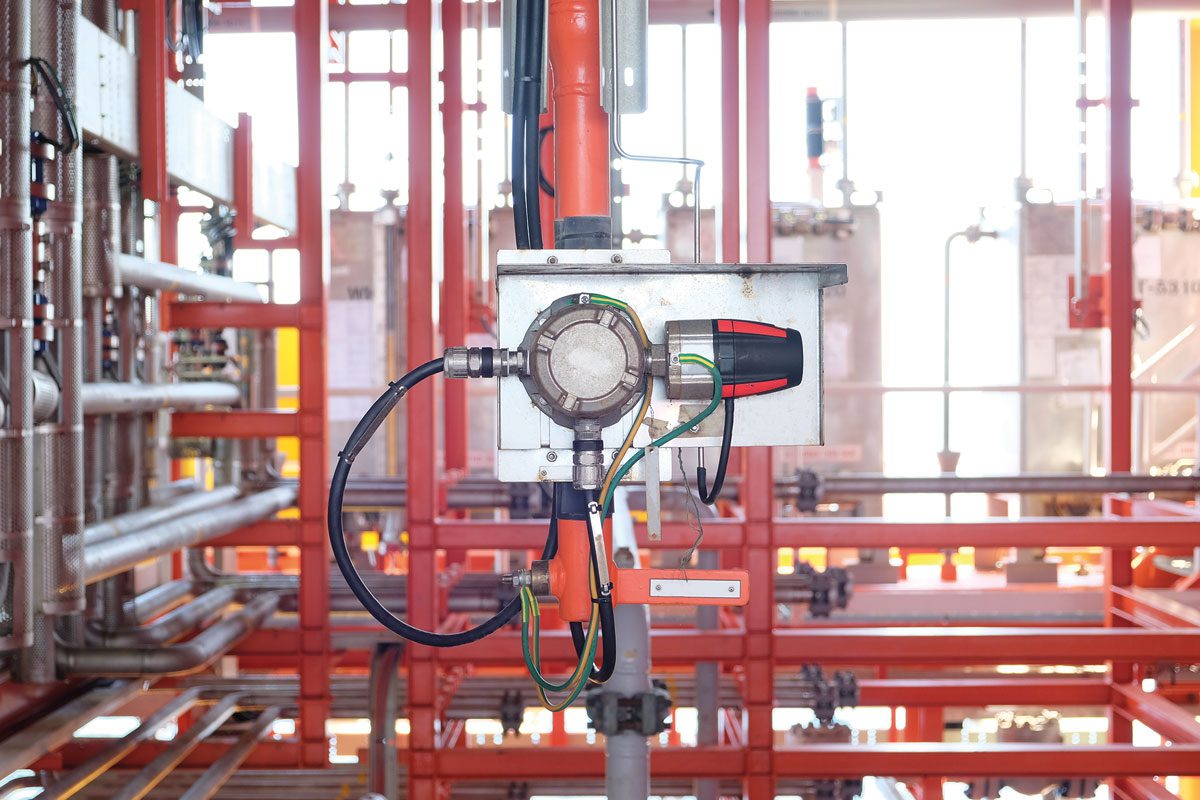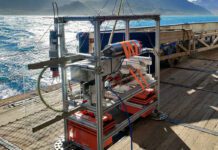Many industries operate in hazardous environments. From oil and gas mining refineries and utilities, to food production, shipping and construction, exposure to harmful gases is common and there is a host of reasons for wanting to monitor colourless gases, as Umicore Coating Services, one of the leading manufacturers and suppliers of infrared precision optical filters and coatings to some of the most demanding specifications and applications, writes.
Not only are these gases invisible to the human eye, sometimes odourless and tasteless too, they are often found in volatile and inaccessible environments. The most common types of toxic gases found in modern industrial workplaces include ammonia, methane, hydrogen sulfide, chlorine, carbon monoxide, and carbon dioxide.
As recently as 35 years ago, miners were still using canaries to warn them of high levels of carbon monoxide or methane present in the mine. Nowadays, huge advances in sensor technology have activated a range of reliable options available for gas detection.
The enormous advantages of IR spectroscopy in detecting hydrocarbons and hazardous chemicals are well established. And better optical sources and more sensitive detectors continue to enhance capability.
Umicore has extensive experience in designing system-critical infrared filters that operate in the detection of noxious, harmful, and corrosive gasses in the atmosphere in the parts per billion.
A good example of this would be readings performed in the region surrounding a leak when a gas leak is identified. The profile collected at the scene is then compared to existing details of harmful molecular agents, enabling quick and targeted clean-up and, better still, prevention of catastrophic consequences.
It is therefore crucial that proper gas detection and monitoring controls be put into place to protect both humans and expensive work equipment.
Energy sector taking detector test
While we continue to see many aspects of climate change manifest themselves in the real world faster than projections, more focus is being placed on efforts to reduce methane emissions, which could yield a rapid decline in the rate of global warming.
84 times more potent in trapping heat than carbon dioxide, methane is the second most abundant anthropogenic greenhouse gas after carbon dioxide and has global warming potential 25 times higher.
Leakage and venting from the energy sector remain a major source of harmful emissions, but our gas detection filters continue to contribute to a real-world solution. Natural gas, which mainly consists of methane, is widely used in power generation. And methane leaks can have devastating results, so detecting leaks is vital during extraction, transportation, and power generation.
This unintentional and involuntary release of gas usually occurs in aged equipment and facilities that lack regular and prompt maintenance. While duty holders attempt to effectively manage asset aging and aid the decision-making process around extending the use of equipment and infrastructure past the originally anticipated service life, IR sensors are increasingly called upon to aid informed decision-making and maintain safety standards.
Making light work of gas detection
Infrared sensors use an infrared beam to detect and quantify gases present in the atmosphere. They represent a worthwhile investment due to their robust and long-lasting nature and are the dominant technology for detecting a range of gases.
Among many applications, our high-performance precision optical filters are used for gas detection and analysis in energy, oil and gas, automotive, fire and security, and industrial automation applications. UCS is a key supplier to a range of global gas detection system market leaders.
Infrared emitters within the sensor generate beams of IR light. And, having passed through a sampling chamber, a filter in front of the detector blocks out light that is not at the desired wavelength while the detector measures the intensity or attenuation. This is then used to determine the concentration based on the absorption of IR radiation as it passes through a volume of the gas.
Chief among its benefits are the fast response times and accurate results, while not requiring oxygen or external gases to operate. While changes in temperature and pressure previously affected reliability, sensors can now provide pressure and temperature compensation.
Continuing advances in technology have also resulted in detectors that continuously monitor combustible gases and vapours within the lower explosive limit and provide alarm indications. These can be deployed within oxygen-deficient or enriched areas, require little calibration, and are immune to sensor poison, contamination, or corrosion.
Our technical know-how means our filters represent a reasonably priced alternative, especially with cost savings courtesy of reduced maintenance in refineries and gas-producing plants.
The gas detection system market is expected to grow at a CAGR of 8.64% through 2026, and for good reason. Primary concerns around safety, or fatal accidents owing to leakages, along with government regulations, security standards, and environmental safety regulations, are key drivers to that anticipated growth.
That said, it is worth remembering that gas monitoring devices do not protect; they exist to alert staff to hazards, enabling them to respond and take remedial action to quickly changing atmospheric conditions.
Like much of our work, it remains vital that the technology is adapted to the application, and so increasingly we are working with clients at an early stage of sourcing and defining optimum solutions.
No matter the scale of your project, or the scope of your budget, we can help you design, implement, and fine-tune your perfect gas detection solution through our prototype design service. Get in touch to find out how!








